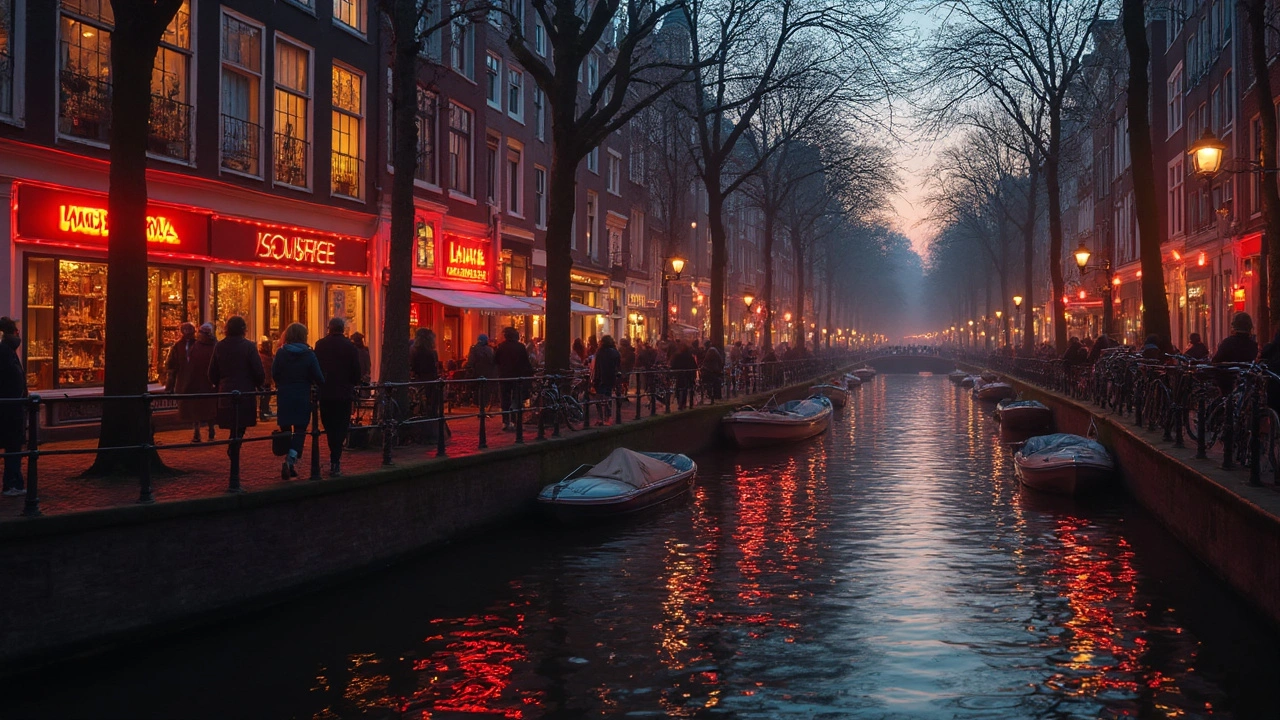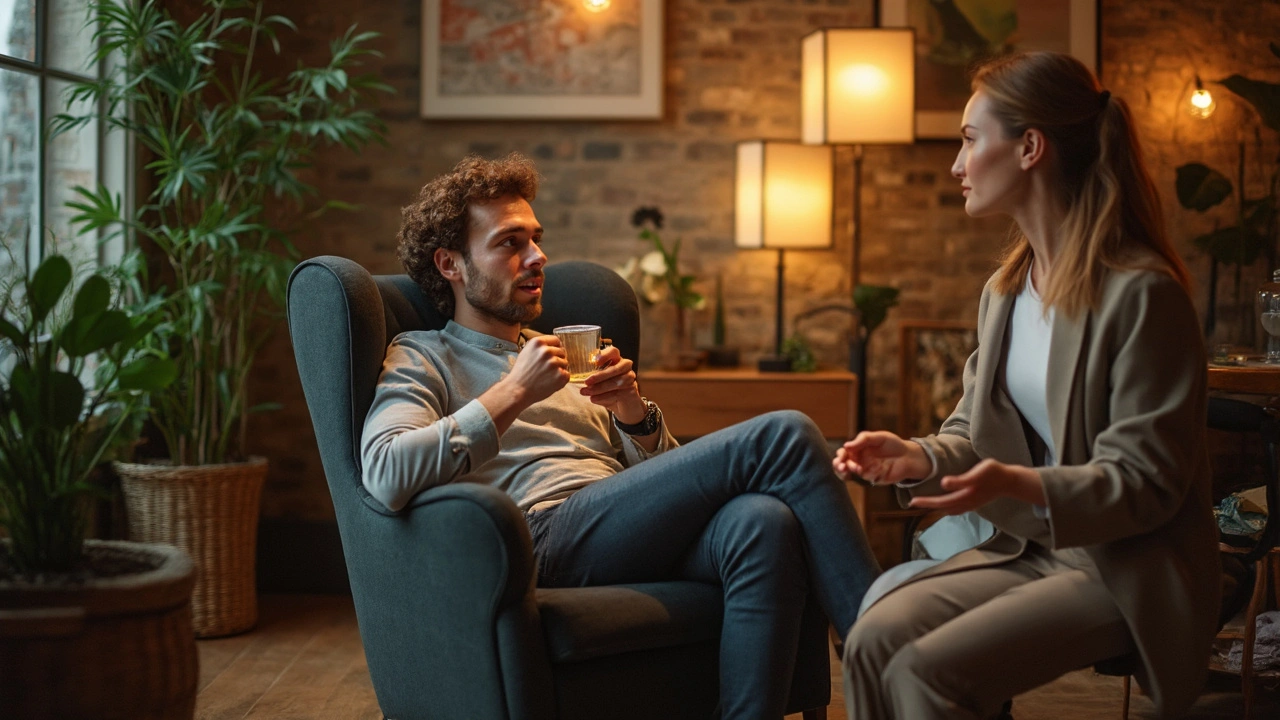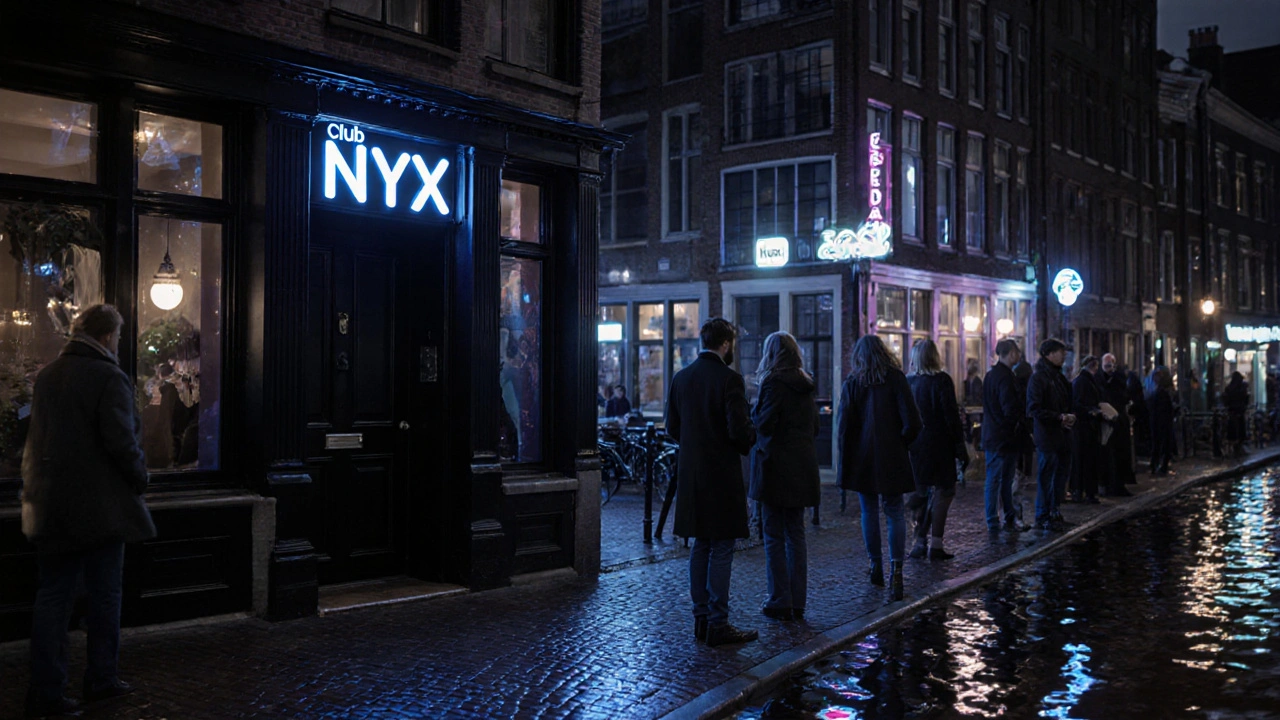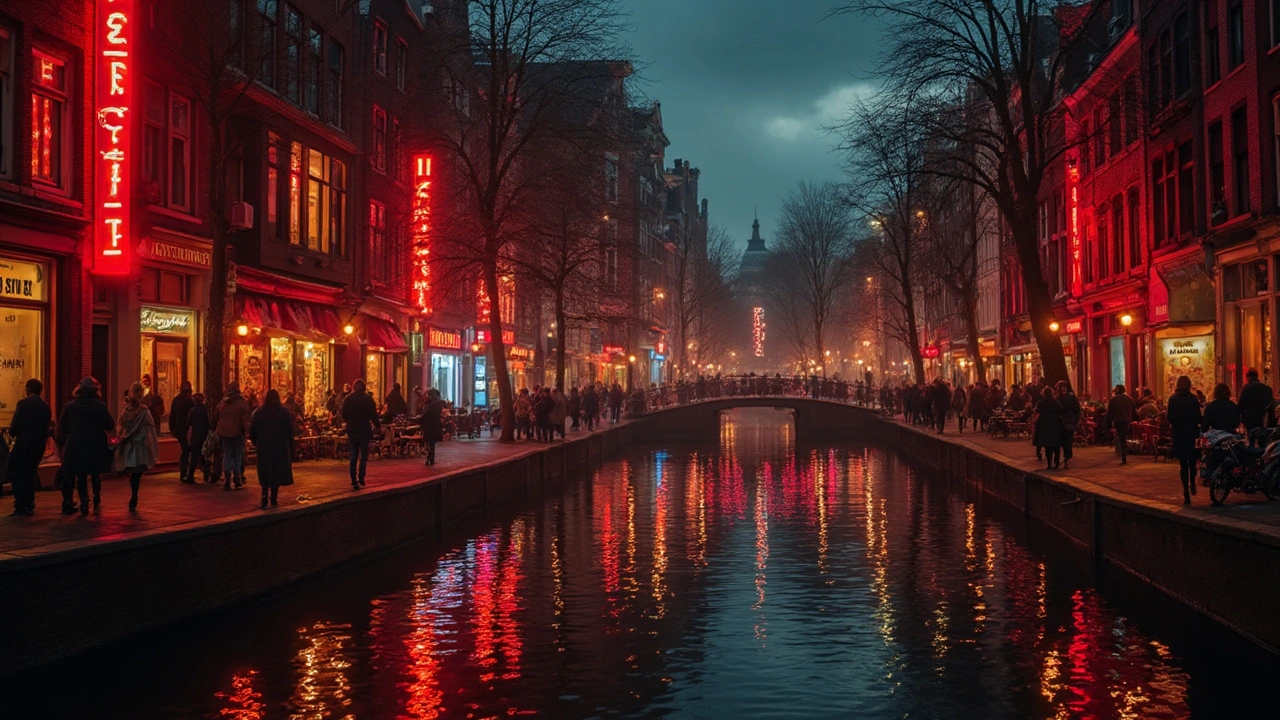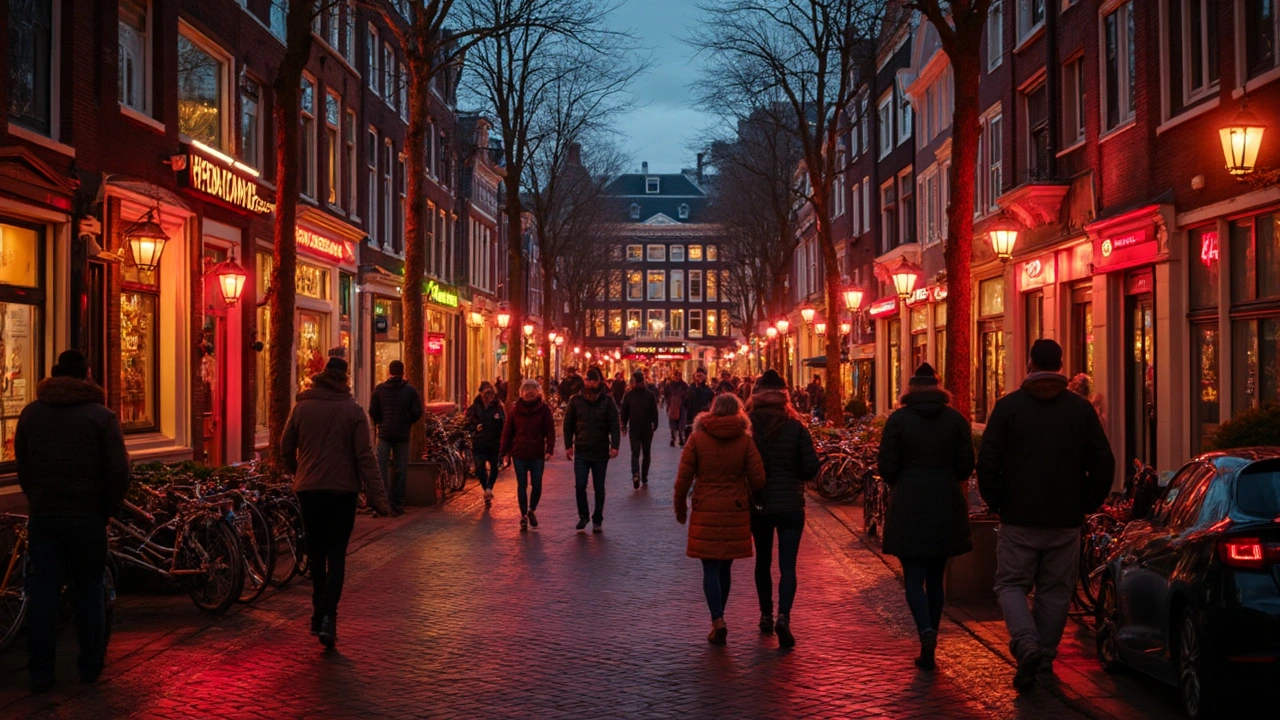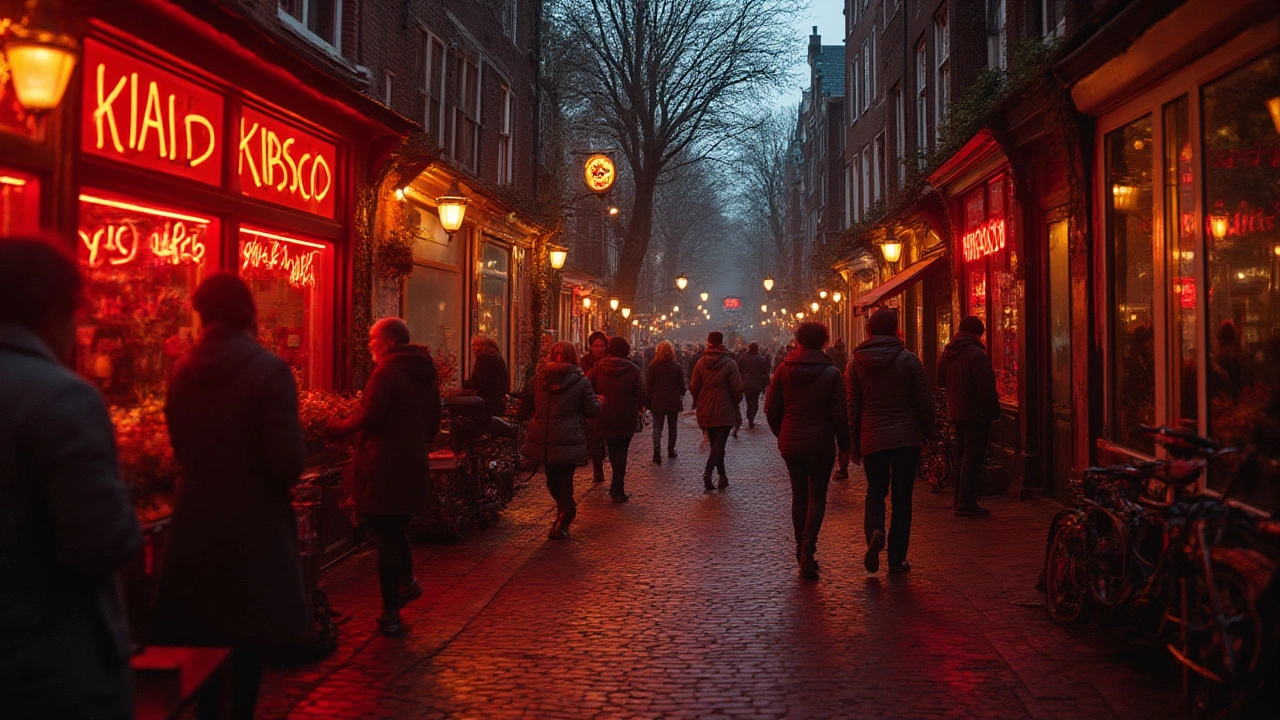
Red Light District Amsterdam – Your Comprehensive Guide
People talk about Amsterdam’s Red Light District like it’s a wild secret, but most folks have no idea what really happens past those glowing windows. The Red Light District Amsterdam isn’t just about what you think; yeah, sex work is legal here, but there’s way more to it. Think old cobblestone lanes pulsing with neon, historic churches peek out between cozy bars, sex shops, and yes, working windows. It’s a clash of five hundred years of history with a bold, modern edge—something you don’t find anywhere else. Some expect something wild or scandalous. Others feel uneasy just picturing it. But the reality? It’s a safe, regulated, even quirky slice of Dutch culture. I’m breaking down what you’ll actually see, how to behave, what to skip, and why you shouldn’t treat it like some kind of ‘vice safari.’ Whether you’re curious, cautious, or already packing your bags, this is all you need to know (and probably a few things you never thought to ask).
Understanding the Basics of the Red Light District
Origins and History
Amsterdam’s Red Light District, or ‘De Wallen,’ traces its roots back to the 14th century. Sailors used to dock in this part of town, fueling an early nightlife scene and making it a hub for anything-goes entertainment—even when the rest of Europe looked down on it. Over the centuries, trade, culture, and pleasure coexisted here, and so did tolerance. By the late 1800s, the area was a full-on sex work district. But don’t picture chaos—Amsterdam’s approach was always pragmatic. In 2000, the Dutch government officially legalized and regulated sex work, leading to today’s system: registered workers, required health checks, and strict laws for everyone’s safety. This isn’t just about adult entertainment; the district’s history is tangled with pirates, artists, rebels, and everyday locals. You’ll even find the Oude Kerk, the city’s oldest church, right in the middle of things—a reminder that Amsterdam doesn’t separate its history from its present.
Core Principles or Components
The Red Light District is built on openness, respect, and strong rules. Windows display sex workers who rent them independently—no pimps, and lots of legal oversight. Sex shops, cannabis cafes, peepshows, and museums line the main streets and back alleys. It’s about freedom—but also boundaries. Scarves and shop racks may hide some windows in the mornings, but by dark, red neon and blue lights (for transgender workers) make the whole scene unmistakable. Amsterdam keeps the area safe not just for clients, but for everyone: workers, tourists, and residents alike. Steeped in centuries-old buildings, you’ll spot every kind of person: giggling tour groups, solo wanderers, older couples holding hands. It’s not only about solicitation; there’s a palpable blend of curiosity, celebration, and sometimes awkwardness as visitors learn how the city approaches adult work with a no-nonsense, no-shame attitude.
How It Differs from Related Practices
Amsterdam’s Red Light District isn’t like the illegal ‘red light’ areas you’ll find in other cities. Here, everything’s above board and tightly regulated. Workers are self-employed with rights and protections, not exploited behind the scenes. Windows and contracts replace street hustling. The dialogue is about safety and respect. And unlike strip clubs or brothels elsewhere, here you can stroll past the windows without obligation. No need to buy a drink, pay a cover, or even engage—it’s part of the city’s living fabric. Tourists are welcome, but so are honest questions and clear limits. That makes De Wallen unique in Europe, blending tourism and legal sex work in a landscape where nobody needs to look over their shoulder. Here’s a quick comparison:
| Practice | Key Feature | Primary Benefit |
|---|---|---|
| Amsterdam Red Light District | Legal, visible windows, regulated | Safety for workers & visitors |
| Strip Clubs | Entertainment-focused | Performance, not solicitation |
| Illegal street work | Hidden, high risk | Unregulated, unsafe |
| Licensed brothels (other countries) | Often out of public view | Some safety, but less openly integrated into city |
Who Can Benefit from Visiting?
Tourists (adults 18+) might visit out of curiosity, for unique photos, a safe party vibe, or even to learn—sex-positive education isn’t exactly in every travel brochure. Couples often come to explore together, sometimes just for laughs or as a challenge to taboos. Solo travelers get a slice of safety and people-watching; seasoned travelers use it to debunk myths about Amsterdam. The LGBTQ+ community will notice a welcoming vibe; there are rainbow flags everywhere and a fair amount of diversity in who works and visits here. Even those with zero interest in sex work might fall in love with the architecture, historic bars, or the raw energy of a neighborhood where everyone’s story feels on display. The district has its own rules, but it’s open to anyone ready to respect them.
Benefits of Visiting the Red Light District
Experiencing a Judgment-Free Zone
One thing you notice right away: there’s less shame here, and more honest conversations. It’s kind of refreshing. Seeing sex work destigmatized—treated like any other job—makes you question why so much of the world still clings to taboos. For some visitors, this alone is a mind-opener. It shapes how you see consent, freedom, and what communities can be when people aren’t forced underground. Tourists often walk away with stories they didn’t expect: not wild confessions, but respect for the Dutch approach.
Learning About Different Lifestyles and Cultures
The Red Light District is a mash-up of people—locals who grew up here, new arrivals working the windows, international tourists who’ve never seen anything like this. You’ll catch dozens of languages in a single stroll. The museums (like the Red Light Secrets Museum or the Erotic Museum) offer a crash course in sex work history, Dutch attitudes, and sometimes just pure fun. Other times, you’ll watch a sex worker shutting the curtains and realize boundaries are fiercely respected here, not just for safety but as a cultural value. It’s a real-time lesson in open-mindedness and civic pride.
Safe, Regulated Nightlife
This could be the safest place for a wild night out in Europe. Police patrol on foot and bike, security cameras are everywhere, and troublemakers get bounced quickly. There’s way less hassle than you might expect, especially compared to seedier corners of nightlife in other cities. Workers can hit panic buttons if needed. Tourists just need to follow the rules—like no photos of workers, and no drugs beyond legal cannabis—and it’s easy to have a chill, even family-friendly walk (seriously—gone are the days of lawless debauchery).
Practical Outcomes for Travelers
Maybe you just want to see Amsterdam’s oldest houses, or sip a craft beer in a brown café that’s been around longer than the USA. Or maybe you’re traveling with friends, and the Red Light District is the one thing everyone can agree to check out. Either way, you walk away with a proper Amsterdam experience. There’s something empowering (and grounding) about being somewhere that sheds judgment, fear, and secrecy without losing sight of the need for care and caution.
| Benefit | Description | Impact |
|---|---|---|
| Openness | Talk about real issues without shame | Breaks taboos, sparks conversation |
| Diversity | See many cultures, backgrounds, stories | Expands perspective |
| Safety | Well-lit, highly regulated | Reduces risk for all |
| Education | Museums, guided tours | Learn about laws, history, health |
| Sightseeing | Historic houses, canals, art | Immersive travel experience |
What to Expect When Engaging with the Red Light District
Setting or Context
De Wallen sits smack in the center of Amsterdam. Don’t be surprised when you wander off the touristy Damrak or Nieuwmarkt and suddenly the streets seem to glow. Expect red neon lit windows, busy bars, burger joints, peepshows, and cannabis ‘coffeeshops’ all next to one another. In the evenings (especially on weekends), it gets crowded—think shoulder-to-shoulder at times. Early evenings are quieter; mornings can be almost peaceful, with families pushing strollers along the canals. You’ll spot plenty of police, tour guides, and sometimes workers walking between shifts. No, it’s not especially dangerous—just energetic, crowded, and always a bit unpredictable.
Key Processes or Steps
Window sex work operates on a simple system. If a window is closed, curtains drawn, or the lights off, it's not open for business. If a sex worker is standing in the window, you can approach and negotiate services—but keep it respectful. Prices and boundaries are discussed before you ever set foot inside. No means no—period. Sex shops, museums, and bars set clear age restrictions (18+). Coffeeshops enforce their own policies, and it's fine to browse without buying. Guided tours often explain the area’s history, legal status, and safety regulations. If you’re new, a guided tour can help you get your bearings without getting lost or awkward.
Customization Options
Not everyone visits for the same reason. Some want wild, others want calm. Solo? It’s safe to wander. With friends? Keep the group respectful; locals hate disruptive bachelor parties. Couples can take couples-only workshops at some venues. There are tours focused on LGBTQ+ history, feminist perspectives, or even just the architecture. And you can always customize your own path: fancy cocktail bar, window stroll, museum visit—mix and match based on your mood. If seeking services, know you have zero obligation to go beyond what’s comfortable. Most workers speak several languages, so honest conversation goes far.
Communication and Preparation
Speak directly and clearly. If you’re unsure about etiquette, ask a local or stick to a guided tour. Always respect boundaries—workers signal their terms with body language and words. Never take photos of the windows or workers (really, don’t—the response is swift and not pleasant). Carry cash, as many services still prefer it. Dress however you like, though party attire is common in the evenings. Be mentally prepared that you’ll see things that might surprise you—or challenge your ideas. That’s the point. Curiosity is welcomed, but so is discretion.
How to Explore the Red Light District Safely and Respectfully
Setting Up for Success
Start with an open mind and low expectations; the reality is rarely as salacious or intimidating as first-timers imagine. Plan your visit during lighter hours if you want a calmer vibe, or head in after sunset if you’re looking for energy. Don’t overindulge right away—Amsterdam’s beers and the coffeeshops’ wares hit harder than you might expect. Wear comfy shoes for walking on cobblestones, and if you’re after history or art, mark key museums on your map beforehand. Download an app or two for navigation, since those alleys can tangle you up fast after dark.
Choosing the Right Resources and Professionals
For guided tours, look for operators registered with the city (they’ll display a badge). Pick bars and restaurants with solid reviews and busy crowds. If you’re engaging with sex work, look for windows with well-maintained displays; avoid anyone operating in an unlicensed way or breaking local rules. Seeking other experiences (workshops, performances, unique food)? The official I Amsterdam website is a good jumping-off point (Web source: https://www.iamsterdam.com).
Step-by-Step Guide to Your First Visit
- Pick a time (early evening is a sweet spot for less intense crowds).
- Enter via Centraal Station so you get the classic canal view.
- Map a few stops: try a museum, stroll the main lane (Oudezijds Achterburgwal), and grab a drink at a centuries-old bar.
- Read up on the local rules before you approach any windows or shops.
- If you engage with sex work, approach respectfully, discuss price and services at the window, agree clearly, pay in cash, and respect all boundaries.
- Stay aware of your surroundings, avoid excessive drinking, and don’t flash valuables.
- Say thanks (or simply walk away politely) when you’re done. No pressure, no drama.
Tips for First-Timers and Couples
- Guided tours offer a safe introduction and give you space to ask awkward questions.
- If you’re with a partner, discuss your own boundaries before you arrive. Some couples find it sparks conversations they never knew they needed!
- Start with a history-focused stop (like the Red Light Secrets Museum) to get context before diving into the nightlife.
- Bring cash in small bills—card acceptance varies.
- Respect everyone you encounter, including fellow tourists; never disrupt windows or act rowdy—you’ll be shown out (or worse, fined) fast.
- Be honest with yourself—curiosity is fine, but pressure isn’t. The district welcomes all, not just the bold or the bawdy.
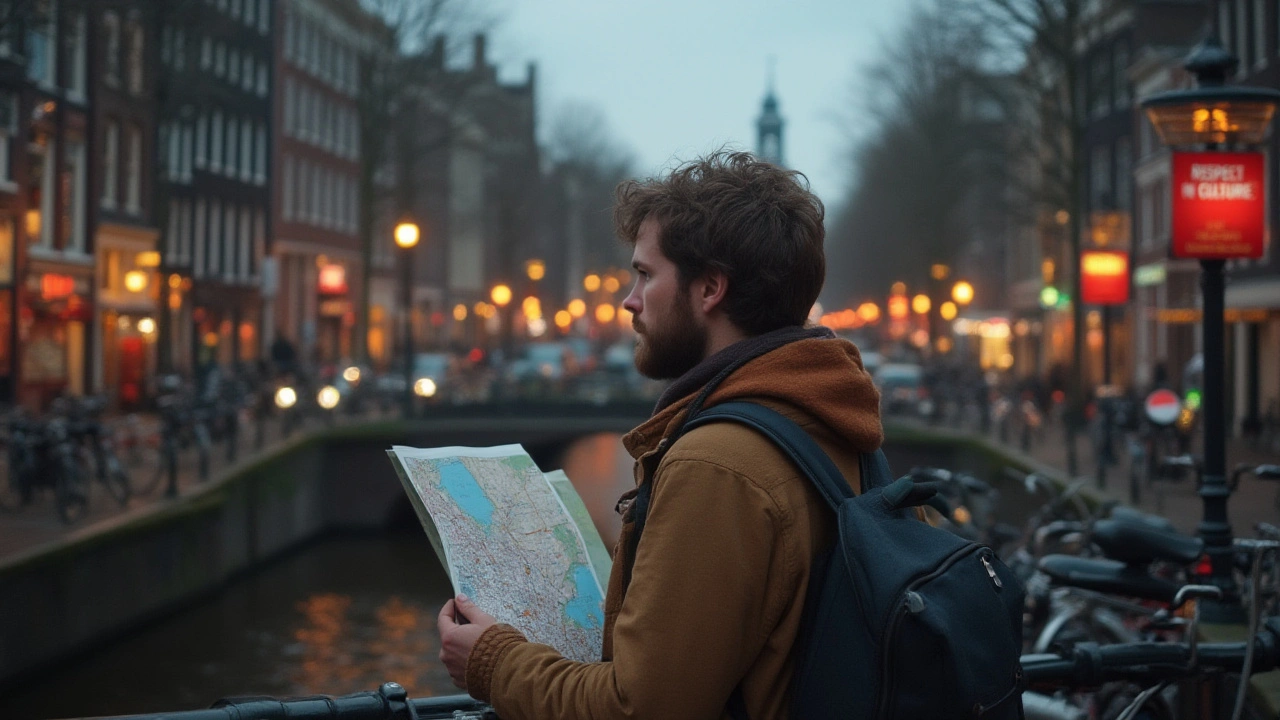
FAQ: Common Questions About the Red Light District Amsterdam
What to expect from the Red Light District?
You’ll see a bit of everything: glowing red-lit windows with sex workers, quirky sex shops, cannabis cafes, and centuries-old architecture all mushed together. Crowds ramp up after sunset. Everyone moves at their own pace—some people take quick photos of the canal (never of workers), some watch street performers, others come for the nightlife. Expect a safe, regulated, surprisingly friendly vibe with police and city stewards nearby. You won’t be pressured; it’s your choice how involved you get.
What happens during a visit to the Red Light District?
You stroll canals or narrow alleys, people-watch, maybe step into a museum or shop, and if you’re interested, you can approach a worker’s window (all clearly marked). Negotiation is straightforward: you talk price, agree to terms, and proceed if you’re both comfortable. Most people just look around, learn, and soak up the atmosphere. Noise rules and behavior standards mean rowdy antics (like bachelor parties) are watched and quickly stopped by local police.
How is the Red Light District different from brothels or strip clubs?
Unlike strip clubs, where the focus is on stage shows and not direct solicitation, or illegal brothels that operate quietly behind closed doors, De Wallen is out in the open, legal, and regulated by strict laws. Window sex workers are independent, not managed by clubs or bosses. Tourists can browse with zero obligation, and all services are discussed upfront for transparency and safety. It’s baked into city life—locals and tourists mingle, and everything is above board.
What’s the process for engaging with a window worker?
You approach the window, show interest, talk directly to the worker about rates and boundaries. If you agree, you enter; if not, move on. Payment is up front. Consent and boundaries are crystal clear. Anything that feels wrong—walk away, no harm done. Always remember: if curtains close, or lights go out, the worker is off-duty. Respect privacy at all times.
Safety and Ethical Considerations
Choosing Qualified Professionals and Resources
Only interact with legal, well-maintained windows or registered venues. Locals will direct you to trusted operators if you ask. Avoid anyone promising secret deals or non-registered services. Stick with companies or guides with city endorsements when joining tours.
Safety Practices
Keep yourself sober-ish (at least enough to stay alert). Hide your valuables like you would in any busy city. Follow all rules: no window photos, no loitering, no hassling anyone. Stay in busy, lit areas—police are always nearby. Here’s an at-glance table:
| Practice | Purpose | Example |
|---|---|---|
| No photos of workers | Protects privacy | Camera phone slaps get you ejected or fined |
| Carry cash only | Safety for simple transactions | Most services refuse cards |
| Ask before entering/do not linger | Prevent harassment | Don’t block windows, move if asked |
| Stay in staffed/licensed areas | Avoid scams | Legal venues have city stickers |
Setting Boundaries
Everything is about clear boundaries. Workers signal with curtains, lights, and conversation. You should do the same—never feel pressured. Communicate your comfort levels early. If you don’t like something, say so or walk away.
Contraindications or Risks
If you’re not yet 18, don’t bother—age checks are strict. If under the influence or visibly unsteady, staff or workers may refuse service. Anyone prone to anxiety in crowds may want to visit during daylight hours. As anywhere, always consult a medical professional before engaging in risky behavior, and follow public health recommendations, especially regarding sexual health.
Enhancing Your Experience
Adding Complementary Experiences
Mash up your trip with nearby cultural sites: visit the Oude Kerk, take a canal cruise, hit a poetry night, or grab a Dutch pancake. Mindfulness can help before or after a night out; reflect on your reactions and what you learned. Amsterdam’s tolerance isn’t just about sex—it’s about accepting diversity. Make the most of it by seeing more than just the district itself.
Collaborative or Solo Options
Solo? Perfect for people-watching and absorbing history at your own pace. Couples or friends? Shared experiences can spark honest dialogue and new perspectives—even if sex work isn’t your focus. Guided group tours offer structure, while solo exploration gives you freedom to wander and reflect.
Using Props or Tools
You don’t need anything special, but cameras are only for canal or street shots—never the windows. Museum souvenirs or sex shop goodies are popular, and workshops often provide materials for safe exploration. A good map or app can save you from going in circles around the canals after a few drinks.
Regular, Respectful Engagement
The more you see, the more the district makes sense. Each visit brings fresh oddities and unexpected insights. Repeat visits with an open mind reveal just how multifaceted, caring, and proudly weird this city really is. It’s never routine.
Finding Resources or Experts
Researching Qualified Guides and Resources
Use official tourism channels or local referrals (hotel staff know the drill). Look for certified guides and tour companies, especially if you want deeper cultural or historical context. The city’s own portals and flyers will list recommended venues.
Online Guides and Communities
Reputable websites like the city of Amsterdam’s tourism board and international travel communities have plenty of tips. Reddit and local expat forums can offer real-time answers, but always cross-reference with city sources for laws.
Legal and Cultural Guidelines
Contra to stereotypes, tolerance doesn’t mean anything goes. Drugs beyond cannabis are illegal; underage entry is strictly policed. Cultural norms ask visitors to keep noise and groups under control. Respect local protests about over-tourism by behaving like a guest, not an invader.
Resources for Continued Learning
Local museums, documentary films, and workshops in English can explain everything from Dutch sex work laws to the history of the LGBTQ+ scene. Many of these are unbiased and designed to help travelers question their own assumptions safely.
Why the Red Light District is Worth Your Curiosity
A Path to Understanding Amsterdam
The Red Light District Amsterdam isn’t just nightlife or a symbol of freedom—it’s a mirror reflecting the city’s tolerance, history, and commitment to safety. It’s eye-opening and humanizing, and, yes, plenty of fun if you want it to be. For many, the real benefit is in learning to talk honestly about things most cultures hide away. Even a brief visit cracks open your assumptions and changes how you see the world.
Try It Mindfully
Experience De Wallen however suits you: a historical tour, a wild night out, or a cultural deep-dive. Listen, observe, and if you’re pursuing more, always communicate clearly and act responsibly. Professional guidance—whether from an official tour, local advice, or museums—can clarify things you never even thought to ask.
Share Your Journey
If you’ve visited, tell your story—did it match your expectations, or teach you something new? Drop a comment below. Think a friend could benefit from this guide? Pass it along. And for more no-BS travel insights, follow my blog here—you’ll get the best Amsterdam tips, without the smoke and mirrors.
Some links may be affiliate links, but all recommendations are based on research and quality.

